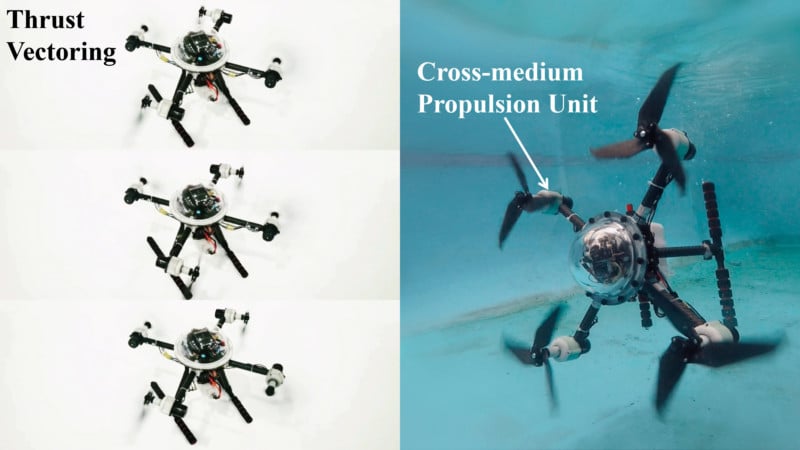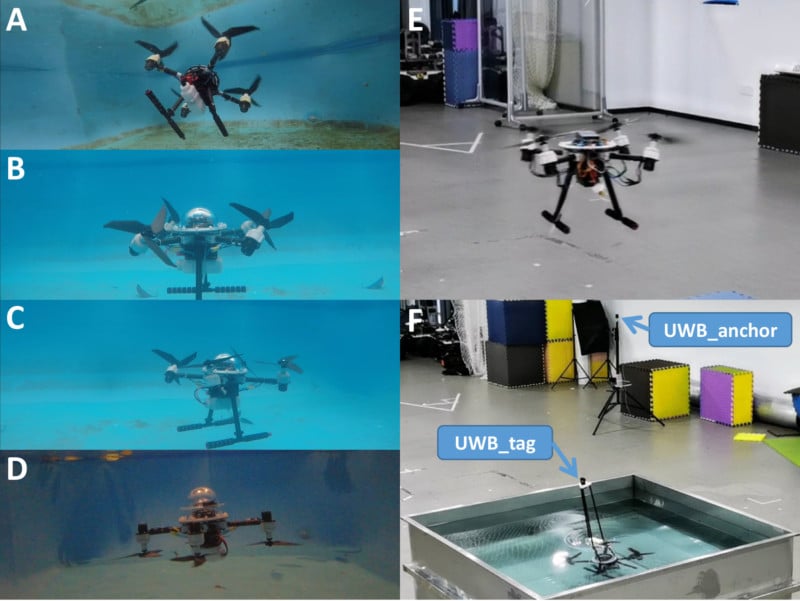New Experimental Drone Can Fly Through the Air and Dive Underwater
![]()
Researchers have created a working prototype of a new hybrid drone that is capable of flying through the air and diving underwater, achieving propulsion in both environments using the same propellers.
The drone, called the TJ-FlingFish, was developed by a team of scientists and researchers from China’s Shanghai Research Institute for Intelligent Autonomous Systems, Tongji University, and the Unmanned Systems Research Group at the Chinese University of Hong Kong.
The goal of the project was to create a dual aerial and aquatic drone that is capable of moving in the two dominant environments on Earth, expanding the possible applications of its use dramatically from the aerial-only or aquatic-only drones that are currently on the market.
“We propose a prototype with special designs for propulsion and thruster configuration to cope with the vast differences in the fluid properties of water and air,” the scientists explain in a paper on the TJ-FlyingFish.
“For propulsion, the operating range is switched for the different mediums by the dual-speed propulsion unit, providing sufficient thrust and also ensuring output efficiency. For thruster configuration, thrust vectoring is realized by the rotation of the propulsion unit around the mount arm, thus enhancing the underwater maneuverability.”

As explained by New Atlas and New Scientist, when the drone is in aerial flight, it operates pretty much identically to how drones currently on the market do: all four of the propeller units face upwards. But when the drone lands on water, those propellers shift direction and face downward, spin at a lower speed, and pull the drone under the surface.

Once underwater, the propellers can adjust their angle as needed and can propel the drone at a speed of up to 6.6 feet per second (2 meters per second) to a depth of up to 9.8 feet (three meters). At any point, the TJ-FlyingFish can return to the surface, rotate its propellers, and take off back into the air.
According to the research documentation, the drone can hover for about six minutes in the air but can operate for up to 40 minutes underwater. It isn’t clear how much of that 40 minutes is in active motion, however.
The TJ-FlyingFish has been designed to work wholly without human intervention as well — it is fully autonomous, which adds to the possible use cases of a finished version of the drone. Since it doesn’t need an active pilot, it could be ideal for surveys of various types both above and underwater.
While the drone clearly uses some kind of camera system, the research documentation only focuses on the TJ-FlyingFish’s multi-environment maneuverability and does not detail how the drone is able to actually perform any surveys. That will likely come down the line once the rest of the system is more feature complete.
The 3.6-pound TJ-FlyingFish is still just a research project, but the design shows promise for far more.
Image credits: Header photo via “TJ-FlyingFish: Design and Implementation of an Aerial-Aquatic Quadrotor with Tiltable Propulsion Units.” Xuchen Liu, Minghao Dou, Dongyue Huang, Biao Wang, Jinqiang Cui, Qinyuan Ren, Lihua Dou, Zhi Gao, Jie Chen, Ben M. Chen